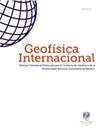地热勘探地球物理学。基于方向导数的计算滤波器在墨西哥Cuitzeo湖地磁数据中的应用
IF 0.7
4区 地球科学
Q4 GEOCHEMISTRY & GEOPHYSICS
引用次数: 3
摘要
为了开发地热田,通过自然系统的结构特征了解该地点的裂缝分布、水文和构造演化是钻探勘探井的先决条件。断层和裂缝是地下流体流动的首选途径,可以通过地表地质和地下地球物理调查来检测。在墨西哥的Cuitzeo湖中部发现了一个正的、亚圆形的平面磁异常。我们的目标是确定一个异常区域的特征,该异常区域位于湖南部,是由热液表现引起的。利用基于对记录磁数据的场值导数运算的计算滤波器,我们揭示了一些影响地热系统中流体循环的结构。我们的重点是N-S和E-W断层,分别属于构造盆地和山脉(B&R)和墨西哥火山带(CVM)。根据我们,interaccion两个或更多不同的根(B&R和自律结构),此外geodinamico环境具体地区(subduccion骨折),facilito出现身体magmaticos basicos深入argilosa掩护,被sedimentacion Cuitzeo湖,导致enfriandose缓慢geotermal系统,以及有助于的编队飞行anomalia magnetica。为了开发地热田,通过自然系统的构造特征了解该地点的裂缝分布、水文和构造演化是勘探井钻探的前提。In order to image the underground shape of约planar公司的渗入,geologic特写(fractured rock-volumes around咨询计划)和to干扰源热岩石volumes, geologic geophysical测绘和is的出局。= =地理= =根据美国人口普查,这个县的总面积是,其中,土地和(1.641平方公里)水。It may instead be相关to the geothermal system in the area which yields目前热斯普林斯at the southern岸上of the lake, at boiling temperatures。在本研究中,我们对Cuitzeo湖及其周围进行了地磁调查,目的是描述这一异常现象,遵循1公里间隔的测量线,覆盖面积约100平方公里。为了提高可解释性,我们将基于方向导数(垂直和水平)的计算滤波器应用于还原到极磁场的原始数据——照亮流体的地下断层和其他可渗透路径,并通过地图上的最大值和最小值绘制不同磁化岩石之间的接触图。虽然使用的大多数过滤器能够定义系统的基本配置,但我们发现,使用导数比率(垂直和水平)的计算过滤器能够更好地解释磁源的深度。= =地理= =根据美国人口普查局的数据,该县的总面积为,其中土地和(1.)水。我们可以mainly强调~ E-W and ~的striking fault-systems, respectively非to the ~的TransMexican Volcanic Belt extensional tectonics and to the ~ E-W盆地& Range, both with侧运动and still active today。我们解释the magnetic resonance source as a岩浆body (related to the volcanism of Michoacan-Guanajuato Volcanic Field) remained受困during its ascent under Cuitzeo lacustrine sedimentation, during the加强geothermal最后一次500 ka, forming the system。本文章由计算机程序翻译,如有差异,请以英文原文为准。
Geophysics for geothermal exploration. Directional-derivatives-based computational filters applied to geomagnetic data at lake Cuitzeo, Mexico
espanolPara el desarrollo de un campo geotermico, el conocimiento de la distribucion de fracturas, la hidrologia y la evolucion tectonica del sitio a traves de la caracterizacion estructural del sistema natural es un requisito previo a la perforacion de pozos exploratorios. Fallas y fracturas representan vias preferenciales por el flujo de fluidos en el subsuelo y pueden ser detectadas mediante investigaciones geologicas en la superficie y geofisicas en el subsuelo. Una anomalia magnetica positiva y de forma sub-circular en planta se encuentra en el medio del lago Cuitzeo, Mexico. A traves de un levantamiento geomagnetico dentro y alrededor del area que comprende la anomalia tratamos caracterizar el reservorio geotermico que, al sur del lago, esta notificado por manifestaciones hidrotermales. Utilizando filtros computacionales basados sobre el uso de operaciones con las derivadas de valores de campo a los datos magneticos grabados, hemos puesto en luz algunas de las estructuras que influencian la circulacion de los fluidos en el sistema geotermal. Nuestra atencion se focalizo sobre fallas ~N-S and E-W, pertenecientes respectivamente a la tectonica Basin & Range (B&R) y a la del Cinturon Volcanico Mexicano (CVM). Segun nuestra interpretacion, la interaccion de dos o mas estructuras de diferentes origenes (B&R y CVM), ademas del entorno geodinamico especifico (subduccion de zona de fracturas), facilito el surgimiento de cuerpos magmaticos basicos del profundo que, bloqueados por la capa argilosa de sedimentacion lacustre del Cuitzeo, dieron lugar, enfriandose lentamente, al sistema geotermal y contribuyeron a la formacion de la anomalia magnetica. EnglishFor the development of a geothermal field, the understanding of fracture distribution, hydrology and tectonic evolution of the site through structural characterization of the natural system is a prerequisite to the drilling of exploratory wells. In order to image the underground shape of approximately planar, relatively permeable, geologic features (fractured rock-volumes around fault planes) and to detect hot rock volumes, geologic and geophysical surveying is carried out. A strong positive magnetic anomaly, nearly circular in 2D, characterizes the middle of Cuitzeo lake, Michoacan, Mexico, apparently not related with a volcanic structure on the surface. It may instead be associated to the geothermal system in the area which yields at present hot springs at the southern shore of the lake, at boiling temperatures. In this study, we conducted a ground magnetic survey within and around Lake Cuitzeo with the aim of characterizing this anomaly, following one-kilometer-spaced survey-lines and covering an area of approximately 100 km2. To enhance interpretability, we applied computational filters based on directional derivatives (vertical and horizontal) to our reduced-to-pole magnetic-field raw data – illuminating underground faults and other permeable pathways for fluids and delineating contacts between differently magnetized rocks, through maxima and minima on maps. While most filters used were able to define the basic configuration of the system, we found that computational filters working with ratios of derivatives (vertical and horizontal) were able to better account for the depth of a magnetic source. Also, faults were more clearly imaged on maps. We could mainly highlight ~E-W and ~N-S striking fault-systems, respectively belonging to the ~N-S TransMexican Volcanic Belt extensional tectonics and to the ~E-W Basin & Range, both with lateral movements and still active today. We interpret the magnetic source as a magma body (related to the volcanism of Michoacan-Guanajuato Volcanic Field) that remained trapped during its ascent under Cuitzeo lacustrine sedimentation, during the last 500 ka, forming the once stronger geothermal system.
求助全文
通过发布文献求助,成功后即可免费获取论文全文。
去求助
来源期刊

Geofisica Internacional
地学-地球化学与地球物理
CiteScore
1.00
自引率
0.00%
发文量
23
审稿时长
>12 weeks
期刊介绍:
Geofísica internacional is a quarterly scientific journal that publishes original papers that contain topics that are interesting for the geophysical community. The journal publishes research and review articles, brief notes and reviews books about seismology, volcanology, spacial sciences, hydrology and exploration, paleomagnetism and tectonic, and physical oceanography.
 求助内容:
求助内容: 应助结果提醒方式:
应助结果提醒方式:


